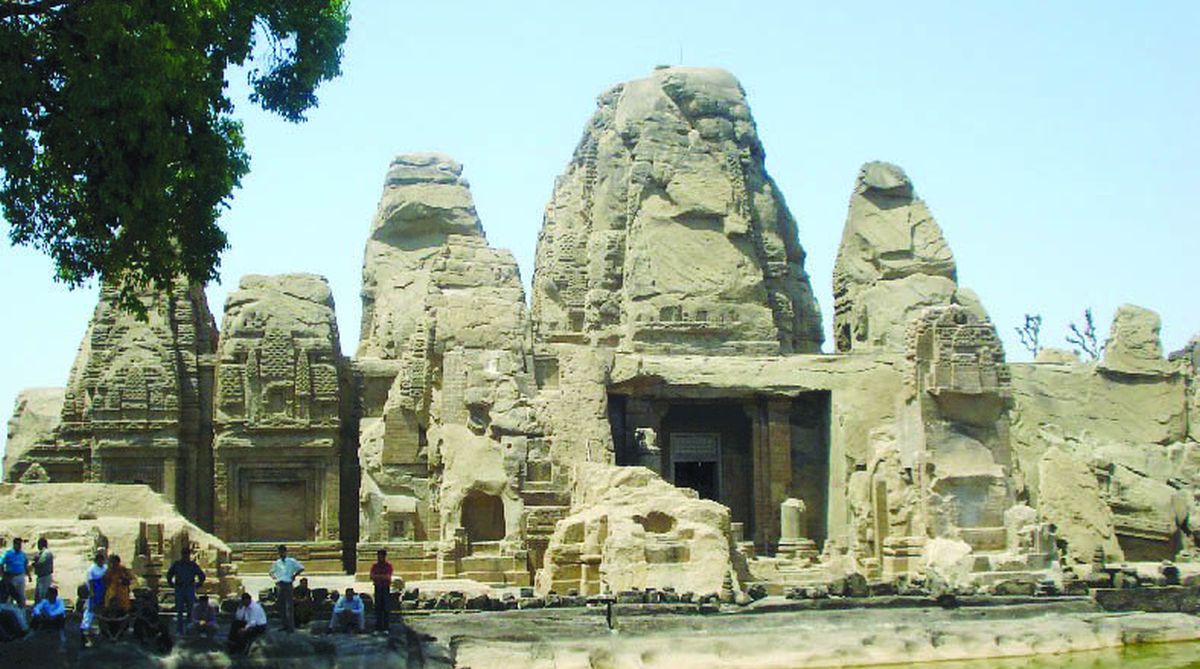Masroor rock temples which are also termed as the architectural marvel of north India or Ellora of north India, are all set to get facelift as the Archeological Survey of India (ASI) is working on the restoration plan for the temples.
“We working on restoration plan to repair cracks that have appeared in the rock structures upon which the temples are constructed,” Dr Aftab Hussain, Deputy Superintendent, ASI Shimla Circle told The Statesman.
Advertisement
Hussain said the repair and restoration work on the rock temples would be completed by March 2019.
Earlier, there were reports that the Masroor rock temples which date back to 8th century are facing existential crisis owing to various cracks in temple structure.
Several cracks had appeared at joints of various stone blocks and even the staircase on the structure is almost broken.
The serious problem was raised by LN Aggarwal, a former director of Geological Survey of India and presently the convener of Kangra chapter of Indian National Trust for Art and Cultural Heritage.
“There were several cracks in the Masroor temples, the only rock a temple in North India and even the main sanctum sanctorum is leaking,” Aggarwal told The Statesman.
The rock temples are an important heritage which needs to be preserved, he added, while urging immediate steps to maintain the structure.
The Masror rock temples are located on Beas river valley in Kangra district of Himachal Pradesh, around 230 km from here and a group of 19 temples carved out of a single huge outcrop of sandstone with a pond in front of the temple.
Constructed in monolithic free-standing single structures that are practically unknown in the Himalayas and such structures are only found in south India at Ellora and Mamallapuram but neither of them is carved out on the top of a hill. Built in Nagara style of architecture at an altitude of 2,500 feet (762 metres) high, there isn’t historical evidence to determine its exact period of construction but historians believes that these may have been built in 7th and 8th century.
However, the first reference was found in 1875 when a list of monuments across India was prepared but it was finally discovered in 1913 by a Britisher H L Shuttleworth.
The rock temples had suffered serious damage in 1905 earthquake which destroyed four of the 19 temples while severely damaging other structures.
The legend has it that Pandavas built these structures but others believe that these were built during the reign of Lalitaditya and Yasovarman.
The temple is believed to be dedicated to Lord Shiva but it has the idols of Lord Rama, Sita and Lakshaman statues in main temple which gave it its local name, Thakurdwara (meaning a temple dedicated to Lord Vishnu).
The temple walls, apart from having carvings of erotica, have images of Lord Ganesha, Budha, Karikeya and Surya etc.
The structure has been included in Prime Narendra Modi led government ambitious scheme ‘Adarsh Smarak Yojna’ and it is vying for world heritage, apart from being termed as “Wonder of the World’ or ‘Himalayan Pyramid’.











